LESSON PLAN: 1, 4, 5, 1 (I, IV, V, I) Progression with A, D, and E
ObjectIVe
Students will be able to use the E, A, and D notes to play a 1, 4, b7, 4 progression on bass enabling them to play and recognize this in dozens of songs.
Resources
Handouts for the E, A, and D bass notes, song charts and lyrics for “Let’s Go Crazy” by Prince, “ROCK in the USA” by John Cougar Mellencamp, “What I Like About You” by The Romantics, and “The Tears of a Clown” by Smokey Robinson and the Miracles.
Vocabulary and Terms
Procedures
- Practice being able to play and switch
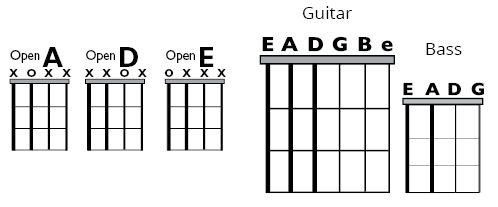 between the A, D, E, and D notes on bass, guitars, or both. Students who are new to doing this may want to play only on the first beat of each note and worry about the specific rhythm after they feel more comfortable. Remember always to mute the previous note when switching to the next.
between the A, D, E, and D notes on bass, guitars, or both. Students who are new to doing this may want to play only on the first beat of each note and worry about the specific rhythm after they feel more comfortable. Remember always to mute the previous note when switching to the next.
- Play the A, D, E, and D bass
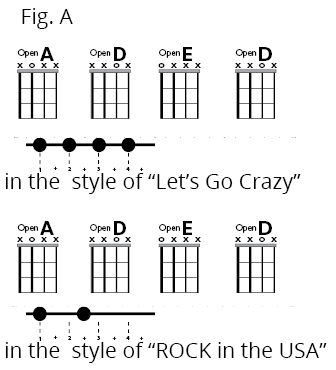 notes and grooves to all of the songs listed above. Since the chord progression is the same, what makes each song sound different is the melody and rhythm.
notes and grooves to all of the songs listed above. Since the chord progression is the same, what makes each song sound different is the melody and rhythm.
Extension
- The bass notes are represented using open strings which can help us understand the instrument quickly.
 After this feels easy for students, try playing the same three bass notes beginning with the A located at the 5th fret on the lowest string to expand understanding how the instrument works (Figure C).
After this feels easy for students, try playing the same three bass notes beginning with the A located at the 5th fret on the lowest string to expand understanding how the instrument works (Figure C).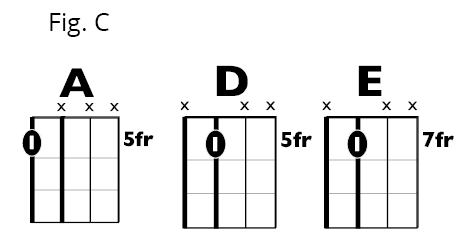
- Discuss bass notes as numbers related to the key you are in. This chord progression is typically called a “1 4 1 5” progression by musicians because A is the 1st chord in the key, D is the 4th, and E is the 5th. Ask students to use the musical alphabet and name these three notes in different keys. “What bass notes would you use in a ‘1 4 1 5’ progression in the key of D? How about in the key of G?”
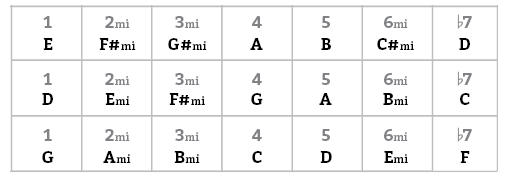
National Core Arts Standards (Music)
National Core Arts Standards (Music) Anchor Standard 4: Select, analyze, and interpret artistic work for performance. Example: General Music MU:Pr4.2.4 b. When analyzing selected music, read and perform using iconic and/or standard notation. Example: General Music MU:Pr4.2.5 a. Demonstrate understanding of the structure and the elements of music (such as rhythm, pitch, form, and harmony) in music selected for performance. Common Core Correlation: CCSS.Math.Content.3.NF.A.1 Understand a fraction 1/b as the quantity formed by 1 part when a whole is partitioned into b equal parts; understand a fraction a/b as the quantity formed by a parts of size 1/b. (division of the octave into numbered scale degrees)

